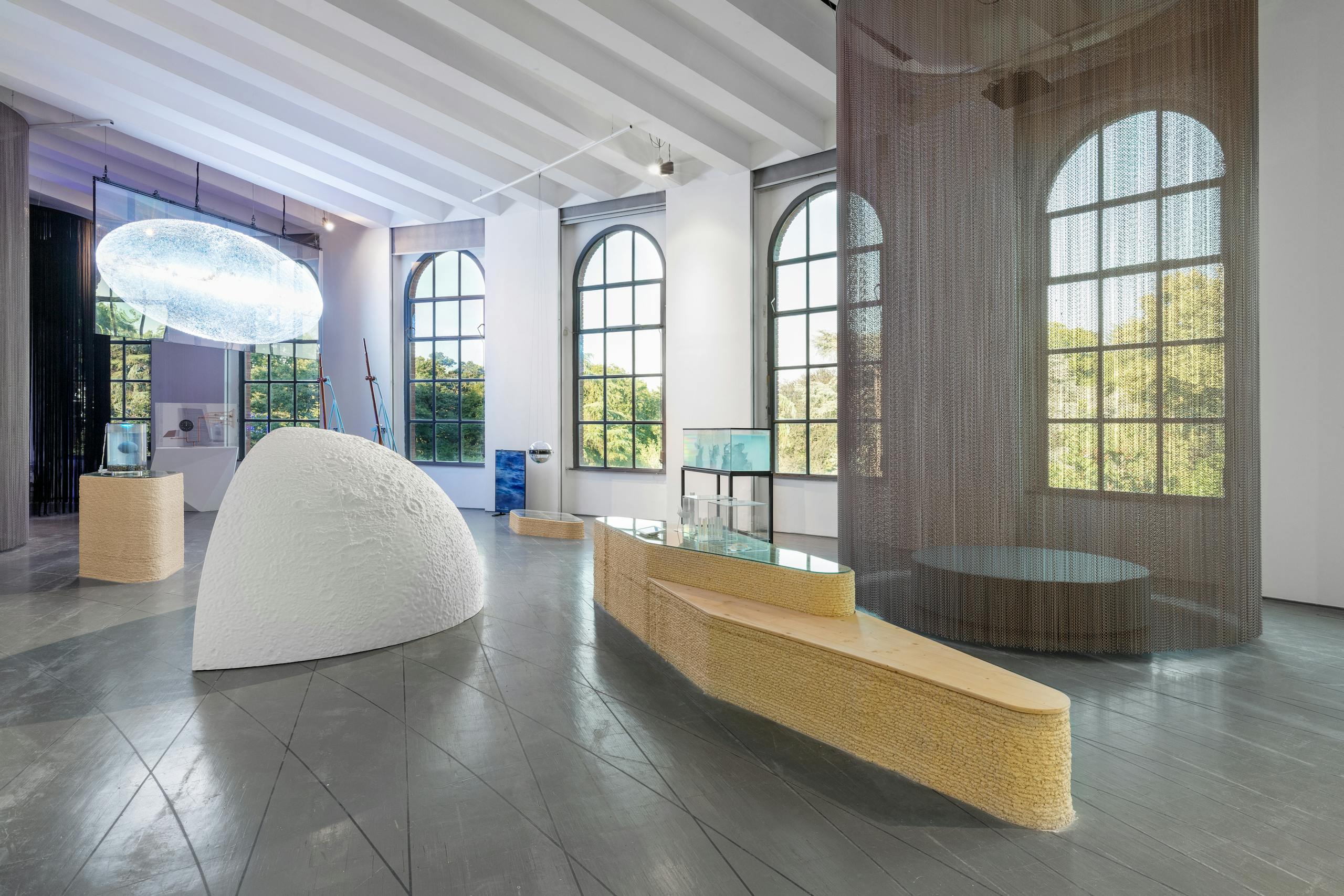
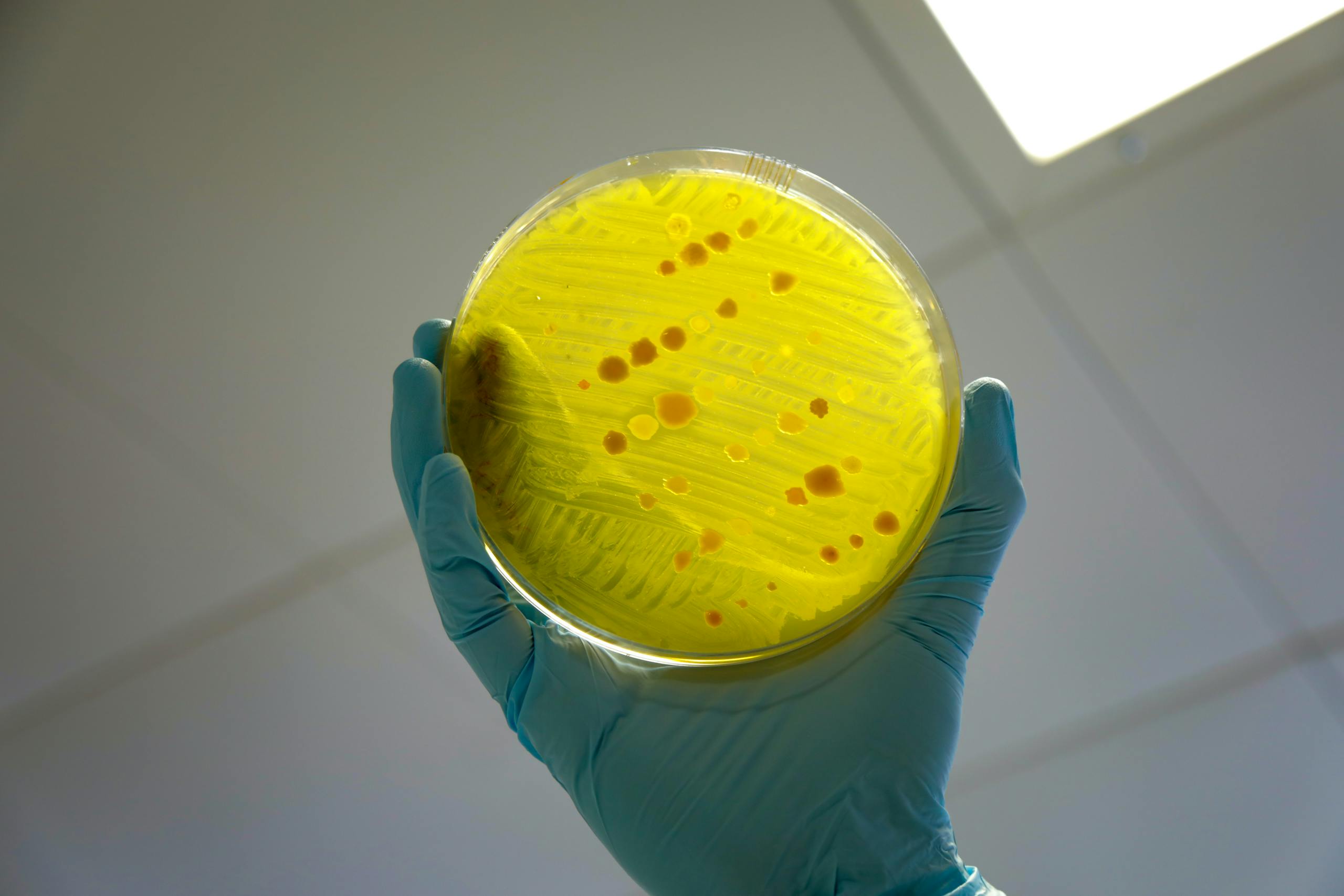
A variety of different bacteria – testing for antimicrobial resistance. Ph.DFID/ Will Crowne. DFID - UK Department for International Development
As part of the in-depth study of the themes of Unknown Unknowns. An Introduction to Mysteries, 23rd Triennale International Exhibition, since June 2021 we have involved researchers, PhD students and undergraduates from universities in Milan and the network of foreign communities in a series of meetings and seminars organized and coordinated by Pupak Tahereh Bashirrad, architect and PhD.
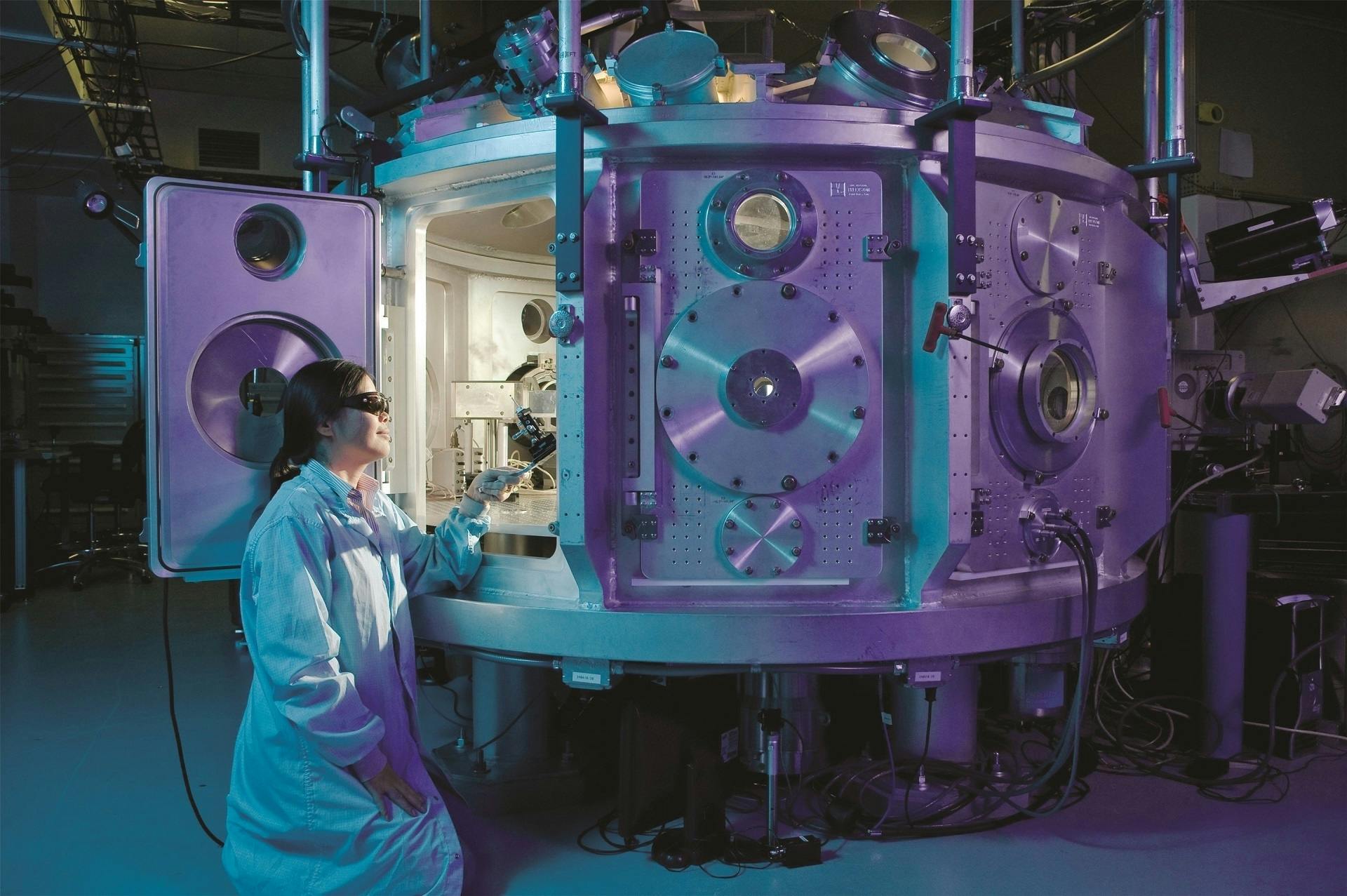
ph. Public domain
The matrix of ideas that pave the way to new scientific discoveries is a mass of more or less ordered heap of knowledge, immersed in the so-called “spirit of the time”, defined during the twentieth century as the “cultural temperament”. How much science and its logic owe to what illogical, irrational, and chaotic crosses the lives and minds of people doing science is not only a curious fact for lovers of illustrious biographies, but is the very soul of scientific thought, its power, its never-tired engine. From the imagination of all the hypotheses and all the possible scenarios, scientific work dictates the rigorous pruning of all the initial details, to identify those that are assumed to be the fundamental elements of the investigated mechanism. And then, step by step – checking every time to not have been mistaken in thinking that things work like this and not like that- all the pieces are concatenated to each other as causes and consequences, and the whole scenario is reconstructed, with variations and adjustments, and with the solid foundations of empirical verification.
Doing science is not about simplifying complexity, but imagining it, imagining what is in it, and blowing it up, projecting it onto the walls of the room, that is our theory – or our life – of people of science. Doing science and inventing are not distant activities, only that the former has incontrovertible constraints with which confrontation cannot be avoided. One of the unknowns that we ignore in doing science is the exact time point in our mind in which the shapeless mass of proven facts and beliefs, imbued with desires, becomes an idea to base a scientific hypothesis on, the minimal particle of a research project.
Of all our senses, sight is the one that provides the mind with the most information. [ …] It is not surprising that also scientific instruments tend, above all, to enhance sight, extending it into new, distant spheres of a scale, intensity, and color.
As human beings we perceive reality through the senses, declining it in spatial and temporal dimensions. Everything we know comes from observations that must inevitably pass through the senses. As scientists, we use instruments as an extension of the senses (lenses for sight, the microscope to observe the small, and the telescope for the large). Tools and technologies, together with our mind, allow us to know and investigate reality in its facets, also those previously invisible. Thus, with each discovery, we have new tools, and we find that we have even more to discover. This concept joins the great mysteries left unsolved (which we well know we do not know, and we do not know when and if we will understand them), in a momentum whose end we do not see.

Amethyst Quartz under the microscope, Ph. 3.0 (Gianluca Nicoli)
Thus the dichotomy of mind (which includes the most rigorous reason, combined with intuition and creativity) – technology is outlined, jointly representing the essential tools of any scientific advancement. In this scenario, the subject in its peculiarity is an integral part of the scientific investigation. What we do is influenced by what we are; we are filters, and we can ask what we can discover, also about ourselves, with this path. By asking ourselves a question of meaning, we can highlight the relationship between what surrounds us and what we are.
One current example is the design of the periodic table of the elements, and its progressive completion based on predictions then scientifically confirmed. Chosen as the most brilliant idea of the millennium by Oliver Sacks for its ability to synthesize and organize information, it led Felice Marco to affirm that “Chemistry has no longer to envy Physics the merit of prophesying facts that the experiment then attests”. Starting from a list drawn up by Lavoisier, Mendeleev worked hard to order and make sense of the elements as a whole, arriving at a system that also contemplated gaps that still have to be filled. The criticisms of the projection of Mendeleev’s strong intuition, which materialized in the periodic table, later gave way to experimental evidence.
Although incomplete, the list was the first attempt to put the elements in order, a very complicated puzzle that would have taken more than a century to be solved and many more decades to be completed with almost all its pieces. We talk about “puzzle” because his system contemplated the possibility that there were other elements to be discovered yet (existing pieces that still had to be “searched”) and that it was therefore normal that some squares in the scheme were empty. Mendeleev drew a lot of criticism for leaving those holes, but the discoveries of the following decades proved him right.
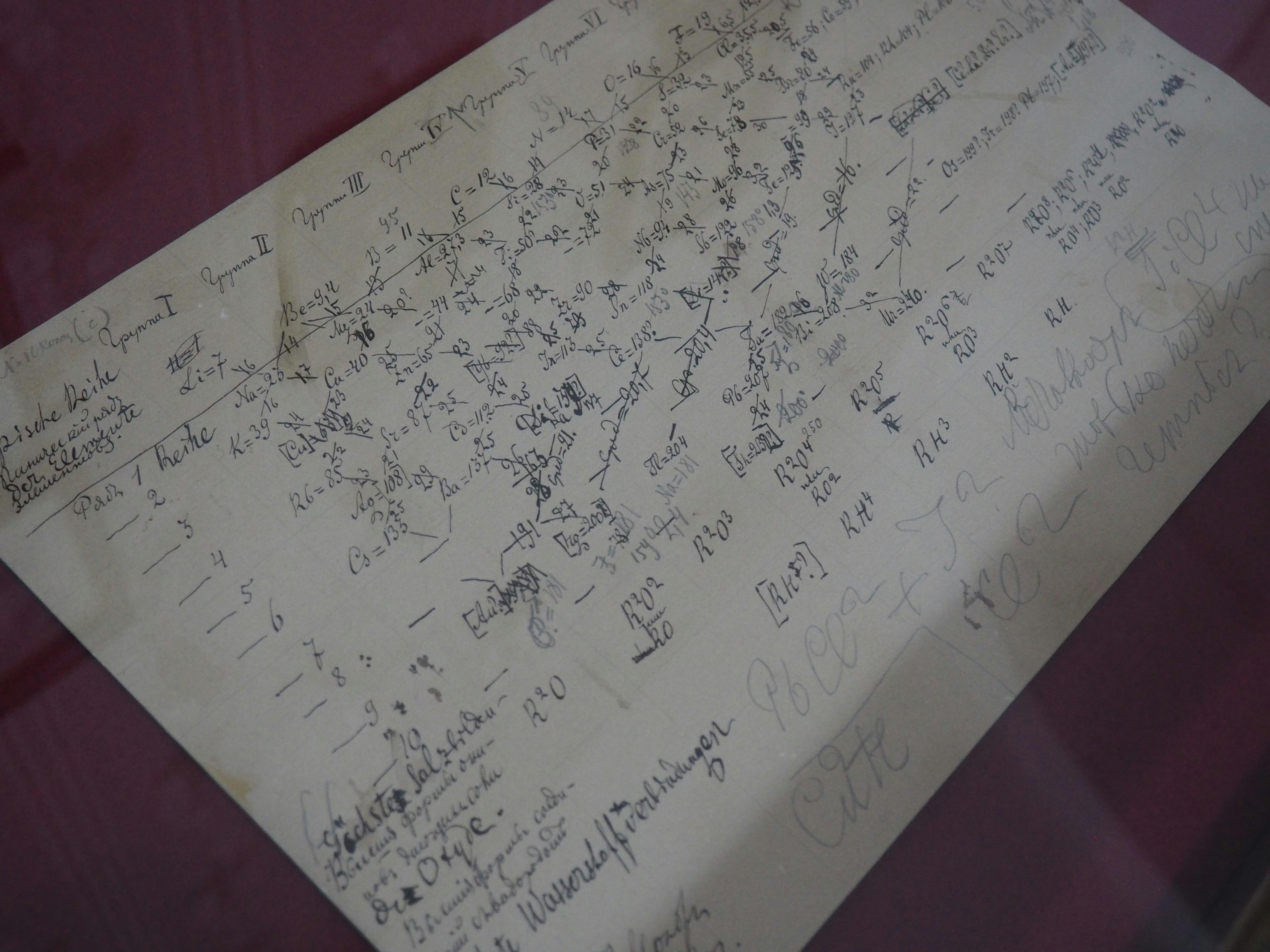
One of Dmitri Mendeleev's hand drawn periodic tables on display in his apartments at Saint Petersburg University, ph. Public domain
Sometimes, however, it’s easier to turn on the light. This is what Bob William, director of the Space Telescope Science Institute at the time, must have thought in 1995 when he decided to observe an apparently empty portion of space using the Hubble telescope. What he obtained was a wonderful image, brimming with galaxies of the most varied shapes, sizes, and colors, still known as the Hubble Deep Field, which alone gave birth to about 400 scientific articles. It also represented the starting point for new, increasingly impactful observations, with the acquisition of the Hubble Ultra-Deep Field in 2004, the Hubble eXtreme Deep Field in 2012, and the ‘ABYSS Hubble Ultra Deep Field in 2019. The latter, obtained through innovative processing, shows us that not only the eyes with which we observe a phenomenon are important but also the processing of the image itself.
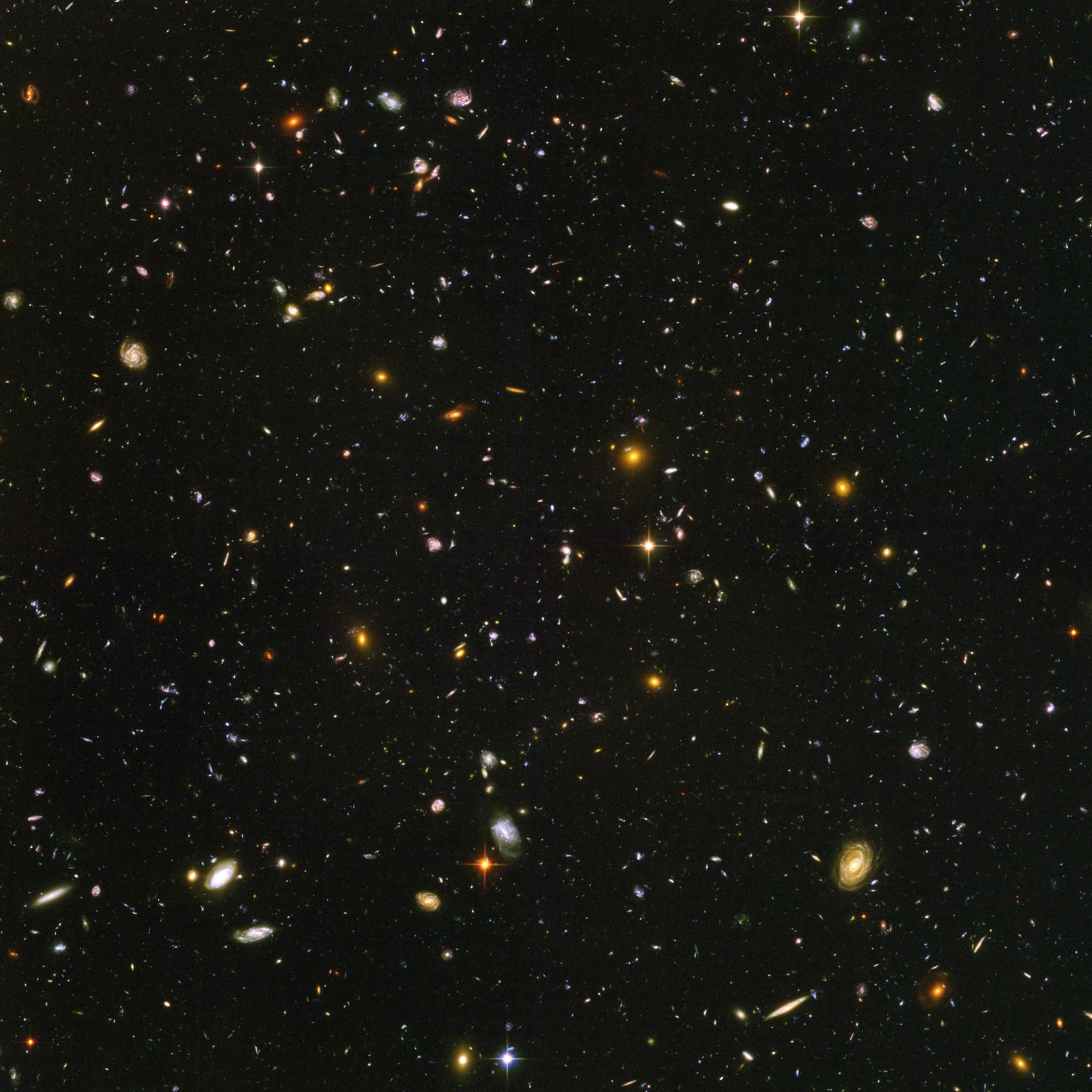
The Hubble Ultra Deep Field, imaged in 2004 by the Advanced Camera for Surveys. This is the deepest visible light image ever made of the Universe, ph. R. Williams (STScI), il team Hubble Deep Field e NASA/ESA
In this sense, the tools that technology provides us are like an extension of the senses with which we scan the world, not with the detachment of an inert object, but rather with the greed and power of an organism that strives to cross its limits in the relentless pursuit of its own survival. In science, we are like Donna Haraway’s cyborgs.
The cyborg would not recognize the Garden of Eden; it is not made of mud and cannot dream of returning to dust.
We are a mixture of flesh and technology, charged with revolutionary potential and emancipatory force, who cross the boundary of natural life but, in doing so, also find themselves in contact with the boundary of life/non-life dichotomy: what is natural and what is artificial? What is the barrier that separates other animals from us? Which are our fellow creatures, and which are the creatures that can be left on the edge of thought because, whatever we do, we will never reach them?
This is how Dante closes the story starring Count Ugolino della Gherardesca, in the XXXIII canto of the Inferno. One interpretation argues that this verse would suggest an act of cannibalism towards his already dead children, driven by hunger imposed on him as a sentence: an act that we would certainly define against nature, made possible by extreme external conditions.

ABYSS Hubble Ultra Deep Field, Instituto de Astrofísica de Canarias. Borlaff (Alejandro Borlaff et al.)
Similarly, humankind continuously – and unconsciously – induces natural selection pressures for other creatures: for example, it has filled so much of the environment with plastic that some bacteria, for lack of better, have developed the ability to digest it, opening us up to new possibilities. How will we face the challenges of the future? Even during the extra-planetary exploration will we continue to consider the surrounding conditions of our actions as a negligible, same old business?
Ultimately, what is the soul of science? The composer Terry Riley sums it up well: “When you listen rigorously to a pattern which is repeated over and over again, at some point it begins to undergo a kind of subtle change because in the meantime you are changing”. In the same way the contents and the methods of science change, like a progressive and simultaneous deepening of the excavation and widening of the view. However, the constants are (at least) two: von Humboldt’s indefatigable ardor that climbs the Chimborazo with the case of tools thanks to the strength of the belief that nature is uniform and can be compared in the four corners of the earth, and that the distance between the Himalayas and the Andes is but a short leap, in the mind of those who want to find profound analogies to discover the common norm, the key that releases the lock, like a revolver with the bullet; and the need to leave misconceptions behind, even when it burns, when one is unwilling to sacrifice a lifetime of effort with them to understand something that continues to elude, as it happened in the Ptolemaic system, in which epicycles continued to multiply for centuries before giving the final step to the Copernican system.
Reflecting on what we do not know yet we do not know is, therefore, asking ourselves how willing we are, as individuals and as a society, to allow ourselves to be uprooted by the reassuring ideas of our material and cultural horizon, like Darwin the instant he realizes that humanity’s fate is similar to that of all other living beings, with its beginning, its trajectories, and its end.
Credits
Edited by Giulia Colombo, PhD in Molecular and Translational Medicine (DIMET) and Postdoctoral Researcher at IIT, Lorenzo Rossi, Elisa Perciballi and Prof. Paola Branduardi from the PhD program in Converging Technologies for Biomolecular Systems (TeCSBi) at University of Milan - Bicocca
Related events
